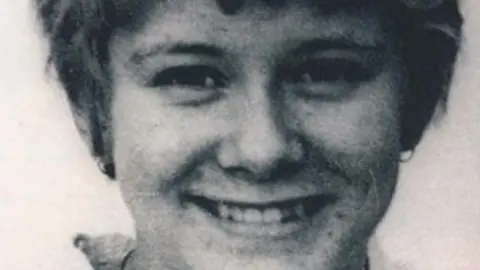The cold case unit solving crimes from the 1960s
 South Yorkshire Police
South Yorkshire PoliceSome of the most notorious "cold cases" on South Yorkshire Police's books could be solved using the diligence of a group of detectives who came out of retirement to investigate them.
The Major Incident Review Team uses modern technology such as DNA analysis to revisit crimes from as long ago as the 1960s in the hope of securing a conviction.
The workload is mainly sexual assaults but there are also high-profile murder cases, such as the 1964 killing of Rotherham schoolgirl Anne Dunwell.
Dave Stopford heads up the unit, which comprises part-time investigation officers who have returned to work after the end of their police service.
 South Yorkshire Police
South Yorkshire PoliceAlthough the team's remit includes recent investigations that have not ended in a charge after 28 days, their "bread and butter" is cases that are decades old.
Mr Stopford said: “I’m working with a team who have perhaps left the police after 30 years and are still quite young and have a lot to give, so they are coming out of retirement.
“I needed people who have detective skills, are trained and have worked on cases involving sexual offences or homicides in the past.
“I’ve also managed homicide and kidnapping cases before so we all know what these investigations need.”
Back in the 1960s, police officers did not have access to DNA testing, CCTV, facial recognition technology and other forensic techniques.
DNA traces left by sex offenders have led to samples which produced a match decades later.
Raymond Ellis attacked a 17-year-old girl in Sheffield in 1987 - and thought he had got away with his crimes for nearly 40 years.
Ellis hit his victim over the head before tying her up and sexually assaulting her as she walked home from a night out.
In 2019, the unit re-examined the victim's jacket sleeve and a DNA swab was a match for Ellis, who was by then in his 60s and living in Bristol. He was later jailed.
There are 35 unsolved murders in the force area, including that of 13-year-old Anne Dunwell, who was strangled with her own stockings and sexually assaulted in the mining town of Maltby.
She had been returning home after visiting her aunt when she was attacked. Although new lines of inquiry were explored in subsequent years, her killer was never identified and Anne's father died without seeing anyone held responsible.
A more recent homicide was in 2001, when Wath-upon-Dearne resident Brian Metcalfe was found murdered after a night out in local pubs. Mr Stopford led a fresh appeal on the 20th anniversary of the 43-year-old's death and told the public that officers thought the answer to the mystery lay "in the local community".
Mr Stopford said there were challenges around old evidence from the 1960s and 70s, as some items had been contaminated before DNA testing methods came into use.
"Exhibits weren’t handled as carefully before DNA was utilised in investigations, so we get more cross-contamination from the detective, scenes of crime officers and even scientists”, he explained.
In cases dating back 50 years, suspects and witnesses have often died, but Mr Stopford's team can still provide evidence or samples in court which can secure justice for a victim or their family.
In some instances, the victims do not want to support a new investigation because their circumstances have changed.
“It is rare we would go forward without the support of a victim," Mr Stopford added.
Suspects can only be prosecuted under laws that were in place at the time the offence was committed, and in some cases, there is not enough pathological evidence to support a murder charge.
Anyone who wishes to report historic serious sexual offences should contact the force at [email protected]
Follow BBC Yorkshire on Facebook, X (formerly Twitter), and Instagram. Send your story ideas to [email protected].
